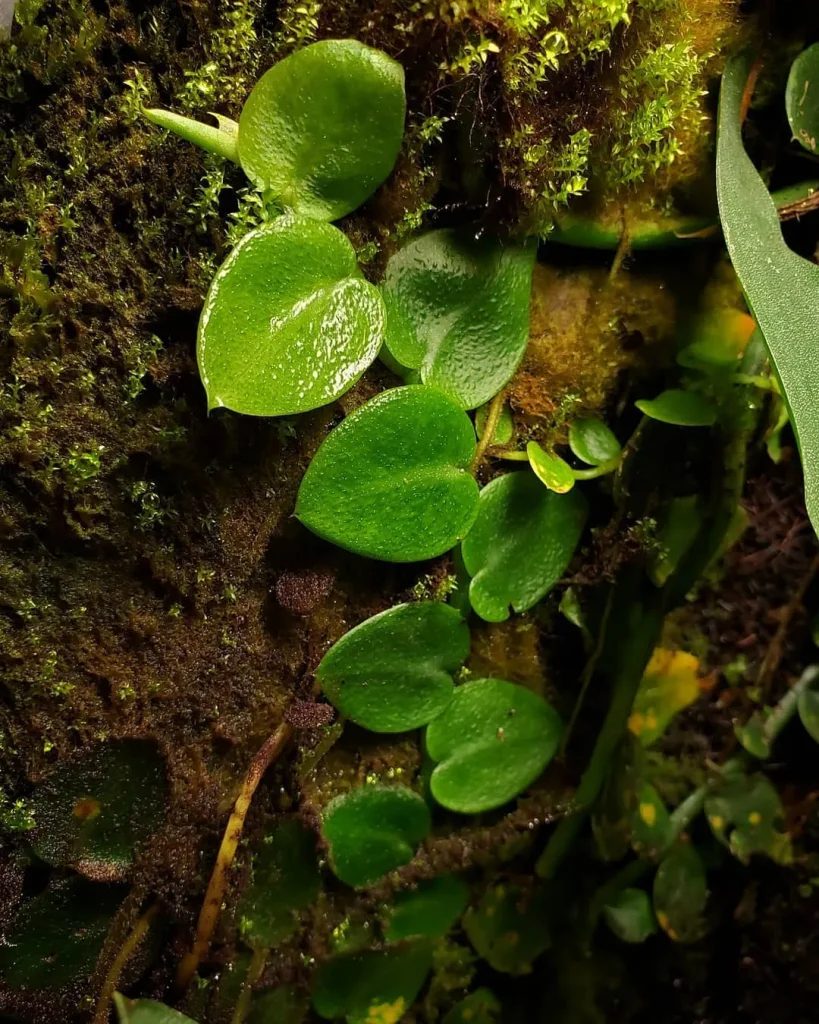
What is Ficus Pumila Variegata?
Hi, Ferb Vu here! I’m a passionate plant enthusiast, and today, I want to introduce you to the captivating Ficus Pumila Variegata, also known as the Variegated Creeping Fig. This little climber has stolen a place in many hearts (and homes) with its adorable looks and easy-going nature.
Whether you’re a seasoned plant parent or a curious beginner, this guide will equip you with everything you need to know about caring for your Ficus Pumila Variegata.
880 Species in Genus Ficus
Light: Illuminating the Path to Growth
Ficus Pumila Variegata thrives in bright, indirect light. Think dappled sunlight filtering through a window – that’s the sweet spot. Too little light can cause leggy growth, with stems reaching for more sun. Conversely, harsh direct sunlight can scorch the delicate leaves.
Can it tolerate full sun?
With proper acclimation, yes! Gradually introduce your Ficus to a few hours of direct sun each day. However, keep a watchful eye for any signs of burning, like brown or yellow leaves.
How does it compare to the standard Ficus Pumila?
Both varieties enjoy bright indirect light. However, the standard green Ficus Pumila can tolerate lower light conditions better than its variegated cousin.
Watering: Keeping the Balance
Finding the perfect watering rhythm is key to a happy Ficus Pumila Variegata. Here’s the trick: allow the top inch of soil to dry out completely before watering again. Overwatering is a recipe for root rot, so err on the side of underwatering.
Signs of underwatering: Wilting leaves and dry, crispy soil.
Signs of overwatering: Drooping leaves, mushy stems, and a foul odor from the soil.
How does it compare to a Pothos?
Both Ficus Pumila Variegata and Pothos enjoy similar watering schedules. However, Pothos can tolerate slightly more neglect between waterings.
Soil: The Foundation for Success
Well-draining soil is crucial for your Ficus Pumila Variegata. A good option is a commercial potting mix specifically formulated for houseplants. You can also create your own blend using ingredients like perlite, orchid bark, and potting soil.
Is there anything I should add to the soil?
You can add a handful of sphagnum moss to the potting mix for extra drainage.
How does it compare to a Snake Plant?
While both prefer well-draining soil, Snake Plants can handle even drier conditions than Ficus Pumila Variegata.
Temperature and Humidity: Creating a Tropical Oasis
Ficus Pumila Variegata flourishes in temperatures between 65°F and 80°F (18°C and 27°C). Avoid sudden temperature fluctuations, especially cold drafts.
Humidity: Moderate humidity levels (around 50%) are ideal. If your home tends to be dry, consider using a pebble tray or humidifier.
How does it compare to a Fern?
Both Ficus Pumila Variegata and Ferns appreciate moderate humidity. However, Ferns generally prefer slightly higher humidity levels.
Fertilizer: Feeding for Flourishing Growth
During the spring and summer growing season, you can give your Ficus Pumila Variegata a monthly feeding of a balanced, diluted liquid fertilizer. In the fall and winter, reduce or stop fertilizing altogether as growth slows down.
Is there a specific type of fertilizer I should use?
A balanced houseplant fertilizer diluted to half strength is perfect.
How does it compare to a Monstera?
Both Ficus Pumila Variegata and Monstera benefit from regular fertilization during the growing season. However, Monstera can handle slightly stronger fertilizer concentrations.
Pruning and Training: Shaping Your Green Masterpiece
The beauty of Ficus Pumila Variegata lies in its versatility. You can let it cascade from a hanging basket, train it to climb a moss pole, or even create a living wall. Regular pruning encourages bushier growth and helps maintain the desired shape.
How easy is it to prune?
Very easy! Simply use sharp shears to snip off any unwanted stems or leaves.
How does it compare to an Ivy?
Both Ficus Pumila Variegata and Ivy are excellent candidates for training and shaping. However, Ivy can be more aggressive in its growth, requiring more frequent pruning.
Propagation: Sharing the Joy
Ficus Pumila Variegata is easily propagated through stem cuttings. Take a healthy stem with a few nodes, dip the cut end in rooting hormone (optional), and plant it in a pot with well-draining soil. Keep the soil moist and provide bright, indirect light. With patience, you’ll see new growth emerge in a few weeks.
How many leaves should a cutting have?
Aim for a cutting with at least 2-3 healthy leaves.
How does it compare to a Jade Plant?
Both Ficus Pumila Variegata and Jade Plant can be propagated through stem cuttings. However, Jade Plant cuttings root faster and require less maintenance.
Common Pests and Problems: Keeping Your Ficus Healthy
While generally a low-maintenance plant, Ficus Pumila Variegata can be susceptible to a few common issues:
- Mealybugs: These cottony white pests suck the sap from your plant. Treat them with insecticidal soap or neem oil spray.
- Scale: These small, hard-shelled insects also feed on plant sap. You can remove them manually with a cotton swab dipped in rubbing alcohol or use insecticidal soap.
- Spider mites: These tiny mites create fine webs on the underside of leaves. Increase humidity levels and use insecticidal soap or neem oil spray to control them.
How does it compare to a Fiddle Leaf Fig?
Both Ficus Pumila Variegata and Fiddle Leaf Fig can be susceptible to pests like mealybugs and scale. However, Fiddle Leaf Fig is more prone to issues like leaf drop due to environmental stress.
Conclusion: The Allure of Ficus Pumila Variegata
With its charming looks, easy-going nature, and adaptability to various growing conditions, the Ficus Pumila Variegata is a true winner. So, if you’re looking for a low-maintenance plant that adds a touch of whimsy to your space, this little climber might just be your perfect match.
If i die, water my plants!



